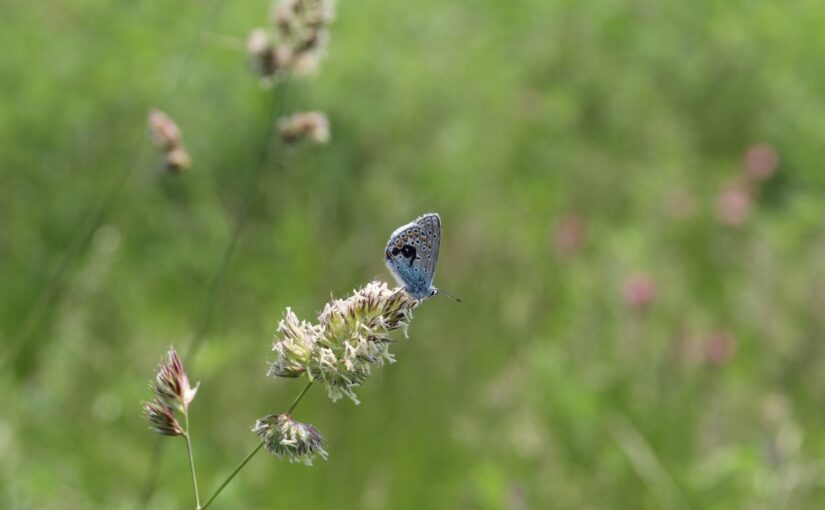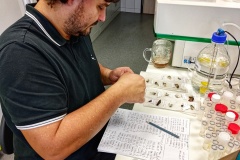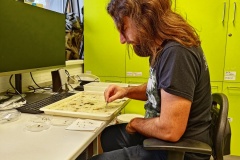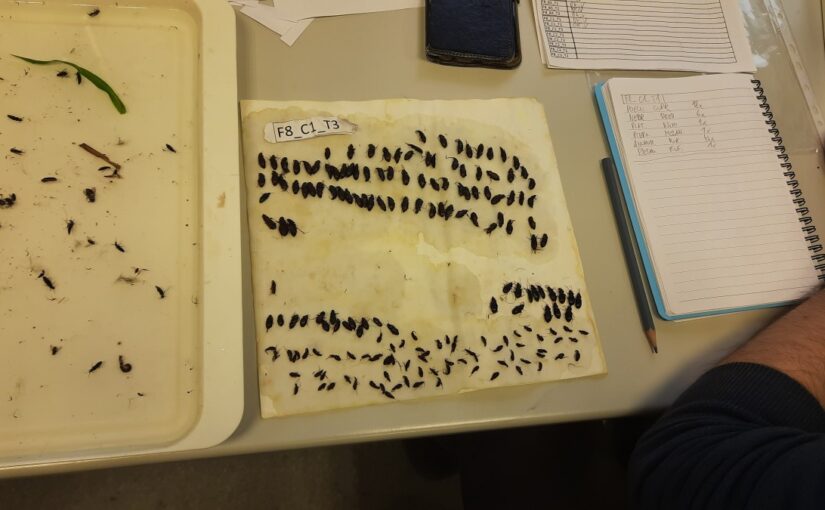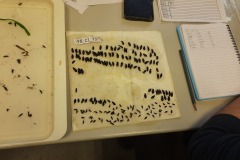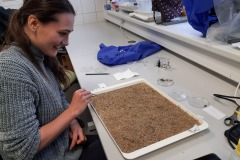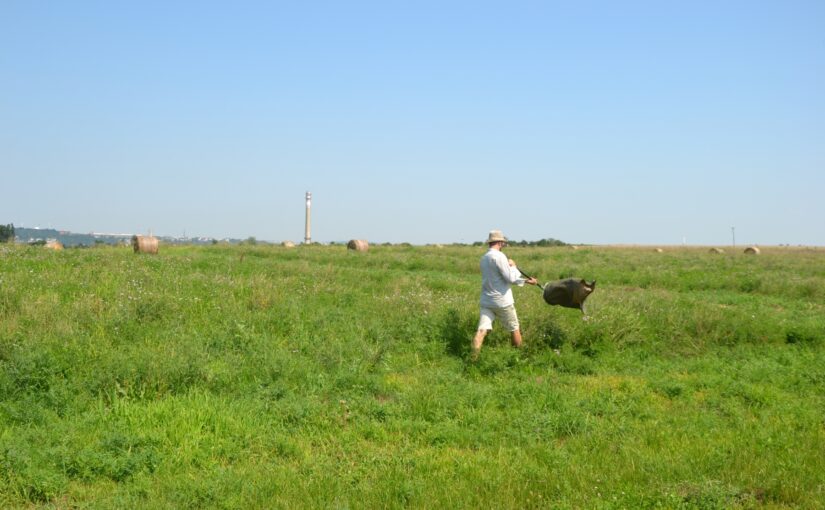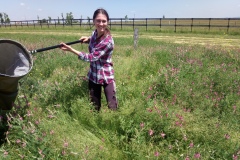During monitoring at the Dívčí Hrady site in 2022, we counted 672 individuals of Chapman´ s blue (Polyommatus thersites). This species became extinct in Prague approximately 20 years ago, and in 2018 our team managed to return it to the nature of Prague. The P. thersites population would thrive here thanks to the proper management of the site, which consists of gradual strip and mosaic hay cutting. In this way, the nutrient plant of this species – Onobrychis viciifolia – can be seeded and spread from the fields we have established into the surrounding area. The monitoring will continue in 2023 as well.
Category: Species monitoring
From the field to the lab
After the end of the field season, we work diligently in the processing of arthropod samples from sheared vegetation. Individual individuals are classified into higher taxa and subsequently determined to the level of species or k we send the determination to colleagues – specialists for the given taxa.
Monitoring of Chapman’s blue
Monitoring of butterflies and other arthropods has been started again
The results of monitoring of Hipparchia semele at Dívčí Hrady confirm the need for further management interventions
In the summer of 2021, we focused on the distribution and population size of one of our target species – the critically endangered rock grayling Hipparchia semele. During the survey from June to October 2021, focused mainly on the newly established grassland areas at Dívčí hrady, we recorded 44 males and 28 females. Rock grayling occurred mainly in the vicinity of solitary trees or around the enclosure with the Převalský horses. In particular, males used trees for so-called perching: they sat on an elevated spot and set out for flying butterflies and other insects in order to find suitable females for mating. Unfortunately, we were not able to record egg-laying as we observed at the same site in the previous season. The reason is probably that turf in the lawn is more developed. The planned disruption of turf on small areas could again increase the attractiveness of the Dívčí hrady sites for the development of Hipparchia semele.
Monitoring of butterflies – results
During the 2021 season, four monitoring visits were carried out. The aim was to evaluate the habitat quality of focal sites using butterflies as bioindicators. In total, we recorded 1691 specimens of 44 butterfly species. We recorded all target species, but only the Chapman’s blue and rock grayling were recorded in large numbers. Let’s hope that in the coming years their numbers will increase thanks to our management interventions!
